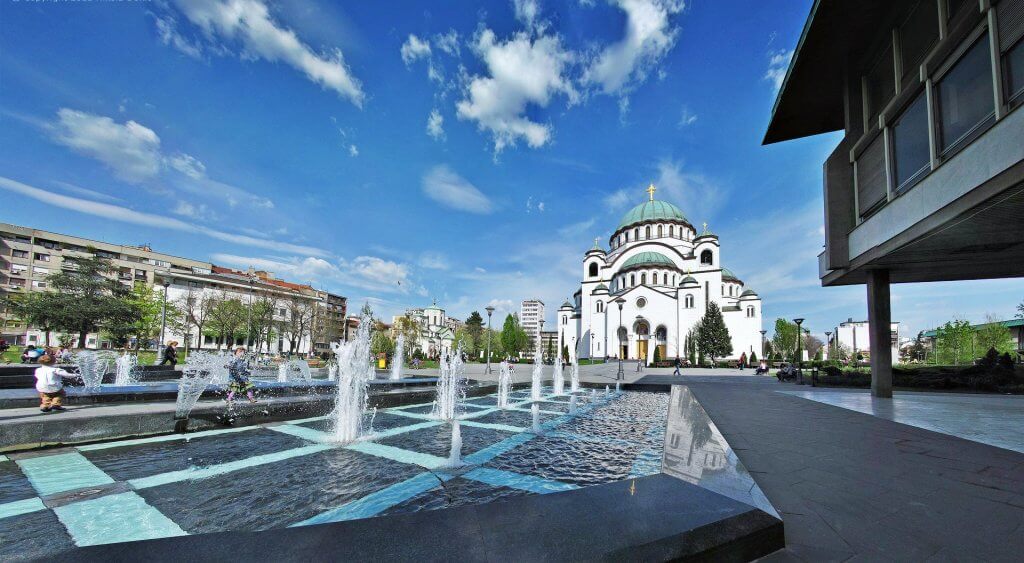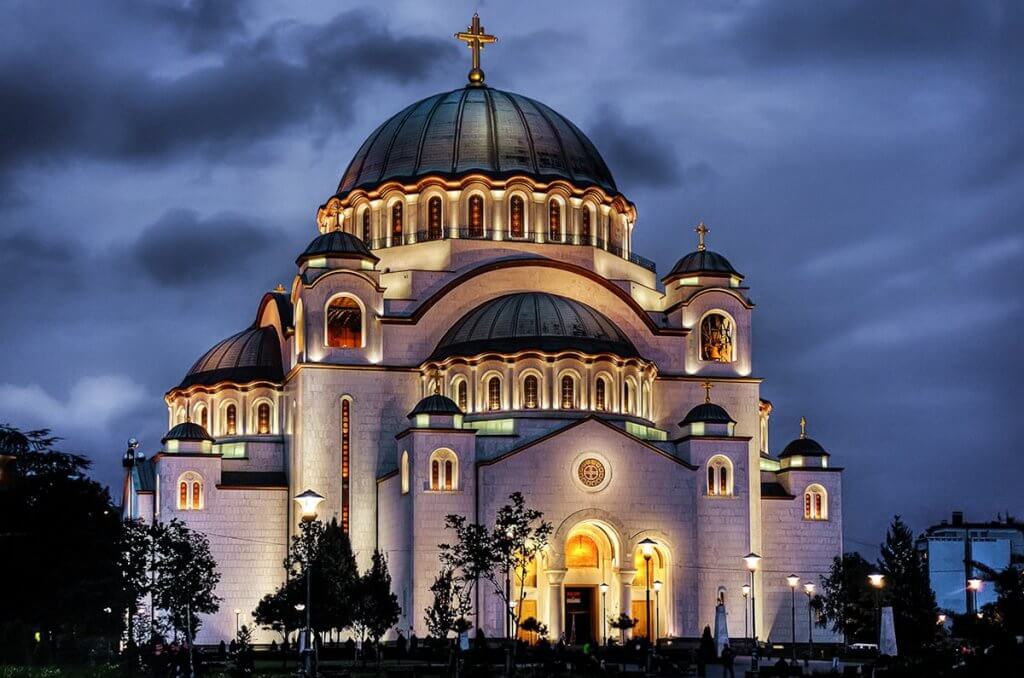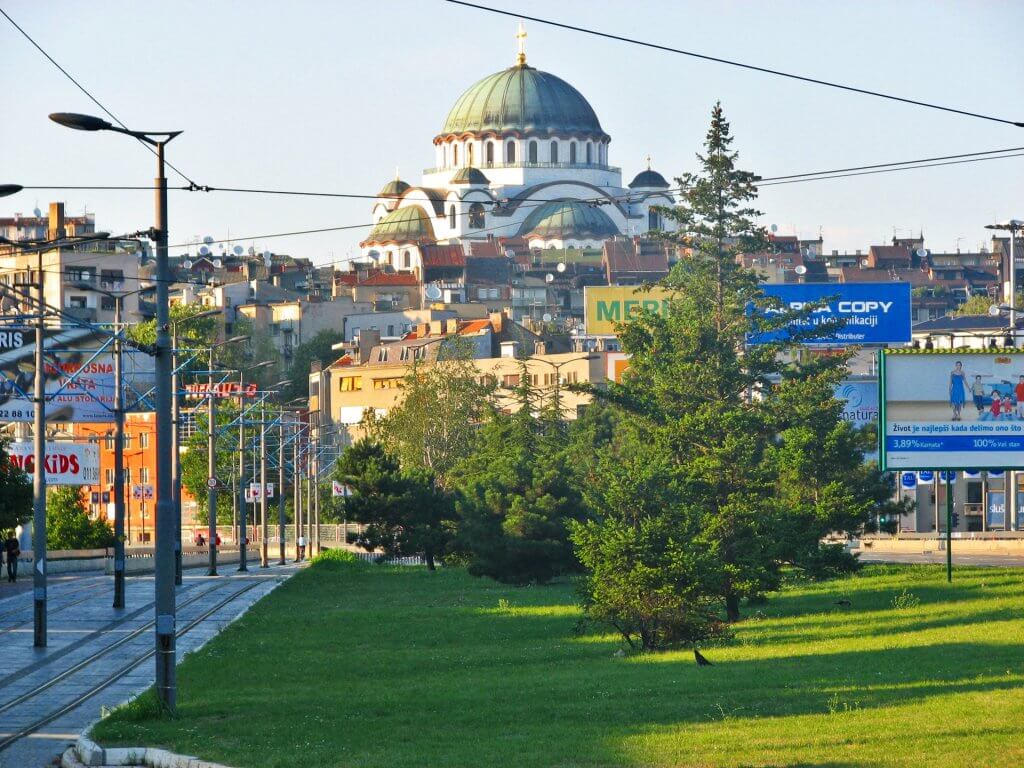Temple of Saint Sava, one of the most recognizable symbols of Belgrade, Serbia and the entire Serbian spirituality. Although not yet completed, we are very proud of it. Also represents perhaps the biggest tourist attraction of the Serbian capital.
At the end of one of the most beautiful tourist routes of Belgrade, that begins with Kalemegdan fortress and extends along the entire downtown, rises a magnificent Cathedral of Saint Sava, the largest active Orthodox church in the world. Conceived as a monument of deep gratitude to St. Sava, the first Serbian archbishop and educator, who made independent Serbian church, reconciled Balkan nations, raised Hilandar and many other monasteries and thus created the Serbian state and the Serbian culture, this temple was built on the site where his remains were burned in 1595, at today’s St. Sava plateau.

Exactly three centuries after the burning of the relics of St. Sava in 1895, it was decided to raise this building. Its construction, however, because of wars, poverty, occupation and changes in social organization, run very slowly. A public competition for the temple project was announced in 1905, but the real solution was not found, and new competition we had to wait until the end of the Balkan and the First World War. The project for the construction of the temple was approved only in 1935, and four years later, the Serbian Patriarch Gavrilo consecrated the foundation of the temple. The works were stopped when, in 1941, when Yugoslavia was occupied. The Germans abandoned the site of the temple used as a depot of its fleet. Partisan and Soviet troops, after the liberation of Belgrade, used that space for the same purpose. Only after the enthronement of Patriarch German in 1958, again resurrected the idea to build the temple. Patriarchs decades of resistance (for 26 years, 88 times the applicant sent the then government) finally bore fruit, however, the construction of the temple restored in 1985.
The construction of the temple has attracted particular attention in those years of domestic and foreign public, especially when lifting heavy domes of 4000 tons with a cross of 12 meters, a height of 40 meters. Raising the dome lasted several weeks, and then the temple ascended over Belgrade. The construction of the temple was again interrupted by wars and the breakup of Yugoslavia until 2000 when the works were resumed again. Today, the external side of this building is completely finished, but work on its interior are still ongoing.

The temple was built in the Serbian-Byzantine style, with a large number of domes and four bell towers 44 meters high, and is basically a form of a Greek cross with a dome above the nave. Dome adorned with 18 gilded crosses, while the bell towers of a total of 49 bronze bells of various sizes. Every day at noon, the bells play the Hymn to St. Sava, and every hour can hear the chorus of the anthem. The main access to the temple is located in the west, while the two side entrances are located on the north and south sides. The temple occupies an area of 3500 square meters on the ground floor, with another 1,500 square meters on three galleries that are located on the first level. There is also a lookout gallery, measuring 180 square meters, while the underground floor of the crypt, the treasury and the burial church of St. Prince and Martyr Lazarus, area of 1800 square meters. The temple can accommodate about 10,000 people.

With a height of 79 meters together with a cross, which occupies a prominent position, the Temple of Saint Sava is visible from all approaches to Belgrade and dominates the panorama in the night. About 1000 reflectors and lights are positioned around the temple lighting, first of all, the main dome, cross and characteristic elements of the building, with the help of lamps warm colors arranged in its interior, the temple radiates the light at night giving the impression of warmth. Illuminated throughout its size, the Temple of Saint Sava shines day and night and captivates with its beauty, size, and grandeur. So today this temple has become one of the most beautiful features of Belgrade.